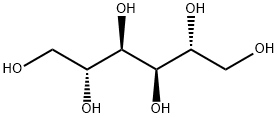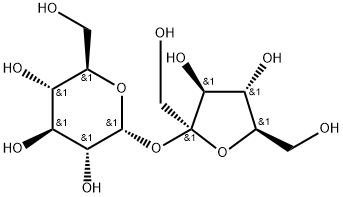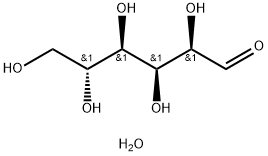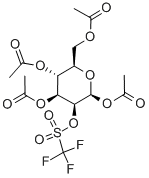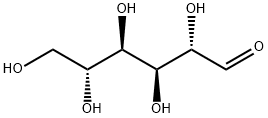D-Mannitol
Synonym(s):D -Mannitol;Mannite;Mannitolum;Parteck Mannitol
- CAS NO.:69-65-8
- Empirical Formula: C6H14O6
- Molecular Weight: 182.17
- MDL number: MFCD00064287
- EINECS: 200-711-8
- SAFETY DATA SHEET (SDS)
- Update Date: 2024-04-24 17:21:45
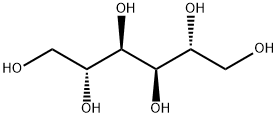
What is D-Mannitol ?
Absorption
Approximately 7% of ingested mannitol is absorbed during gastrointestinal perfusion in uremic patients.
Inhalation of 635 mg of mannitol powder yields a plasma Cmax of 13.71 μg/mL in 1.5 hours (Tmax) and a mean systemic AUC of 73.15 μg*h/mL.
Toxicity
Mannitol overdose may result in bronchoconstriction and should be counteracted using a short-acting bronchodilator and other symptomatic and supportive care, as necessary.
Description
A white, crystalline solid consisting of D-mannitol and a small quantity of sorbitol. It is odorless and has a sweet taste. It is soluble in water, very slightly soluble in alcohol, and practically insoluble in most other common organic solvents. It is prepared commercially by catalytic reduction of glucose. Mannitol occurs in small amounts in a variety of foods such as olives, beets, and celery, and in the exudate of certain trees.
Description
D-Mannitol [(2R,3R,4R,5R)-hexane-1,2,3,4,5,6-hexol] is a reduced sugar found in plants ranging from flowering ash (the biblical “manna”, from which it gets its name) to seaweed. It can be prepared by the electrolytic reduction of glucose. It is an unusual sugar alcohol because it is slightly acidic in aqueous solution. It has several medicinal uses, including the controversial practice of reducing intracranial pressure following head trauma.
The Uses of D-Mannitol
Labelled D-Mannitol (M165000). D-Mannitol is widespread in plants and plant exudates; obtained from manna and seaweeds. D-Mannitol is used in the food industry as anticaking and free-flow agent, flavo ring agent, lubricant and release agent, stabilizer and thickener and nutritive sweetener.
What are the applications of Application
D(?)Mannitol is a sugar alcohol that can be used as an inert osmotic control substance
Background
Mannitol is an osmotic diuretic that is metabolically inert in humans and occurs naturally, as a sugar or sugar alcohol, in fruits and vegetables. Mannitol elevates blood plasma osmolality, resulting in enhanced flow of water from tissues, including the brain and cerebrospinal fluid, into interstitial fluid and plasma. As a result, cerebral edema, elevated intracranial pressure, and cerebrospinal fluid volume and pressure may be reduced. Mannitol may also be used for the promotion of diuresis before irreversible renal failure becomes established; the promotion of urinary excretion of toxic substances; as an Antiglaucoma agent; and as a renal function diagnostic aid.
On October 30, 2020, mannitol was approved by the FDA as add-on maintenance therapy for the control of pulmonary symptoms associated with cystic fibrosis in adult patients and is currently marketed for this indication under the name BRONCHITOL? by Chiesi USA Inc.
Indications
Used for the promotion of diuresis before irreversible renal failure becomes established, the reduction of intracranial pressure, the treatment of cerebral edema, and the promotion of urinary excretion of toxic substances.
Mannitol is also indicated as add-on maintenance therapy for improving pulmonary function in cystic fibrosis patients aged 18 and over who have passed the BRONCHITOL tolerance test (BTT). It is recommended that patients take an orally inhaled short-acting bronchodilator 5-15 minutes prior to every inhaled mannitol dose.
Pharmacokinetics
Chemically, mannitol is an alcohol and a sugar, or a polyol; it is similar to xylitol or sorbitol. However, mannitol has a tendency to lose a hydrogen ion in aqueous solutions, which causes the solution to become acidic. For this reason, it is not uncommon to add a substance to adjust its pH, such as sodium bicarbonate. Mannitol is commonly used to increase urine production (diuretic). It is also used to treat or prevent medical conditions that are caused by an increase in body fluids/water (e.g., cerebral edema, glaucoma, kidney failure). Mannitol is frequently given along with other diuretics (e.g., furosemide, chlorothiazide) and/or IV fluid replacement.
Inhaled mannitol has the possibility to cause bronchospasm and hemoptysis; the occurrence of either should lead to discontinuation of inhaled mannitol.
Metabolism
Mannitol is metabolized only slightly, if at all, to glycogen in the liver.
Properties of D-Mannitol
| Melting point: | 167-170 °C(lit.) |
| Boiling point: | 295°C |
| Density | 1.52 |
| Flash point: | 290-295°C/3.5mm |
| storage temp. | 2-8°C |
| solubility | H2O: 1 M at 20 °C, clear, colorless |
| form | Crystalline Powder |
| color | White |
| Water Solubility | soluble |
Safety information for D-Mannitol
| Signal word | Warning |
| Pictogram(s) |
 Exclamation Mark Irritant GHS07 |
| Precautionary Statement Codes |
P280:Wear protective gloves/protective clothing/eye protection/face protection. |
Computed Descriptors for D-Mannitol
| InChIKey | FBPFZTCFMRRESA-KVTDHHQDSA-N |
Abamectin manufacturer
Frolic Pharmachem
New Products
3-N-BOC-(S)-AMINO BUTYRONITRILE 4-Piperidinopiperidine 2-Methyl-4-nitrobenzoic acid 2-(4-bromophenyl)-2-methylpropanoic acid 4-Acetyl-2-methylbenzoicacid Acetyl-meldrum's acid Ethyl-4-Pyrazole carboxylate 2,6 Di acetylpyridine 2,6-Pyridinedimethanol 5,7-Dichloro-3H-Imidazo[4,5-B]Pyridine 5-Bromo-2-Methoxy-4-Methyl-3-Nitropyridine 2-Fluoro-5-Iodopyridine 2-Fluoro-5-Methylpyridine 2-Chloro-3-Bromo-5-Amiopyridine METHYL-4-(BUTYRYLAMINO)3-METHYL-5-NITROBENZOATE TRANS-CYCLOBUTANE-1,2- DICARBOXYLIC ACID 5-Nitro indazole R-(-)-5-(2-AMINO-PROPYL)-2-METHOXY-BENZENESULFONAMIDE 1,3-cyclohexanedione 4-Aminophenaethylalchol 3-NITRO-5-ACETYL IMINODIBENZYL (S)-(+)-4-BENZYL-2-OXAZOLIDINONE 4-FLUORO PHENYL MAGNESIUM BROMIDE 1.0 M IN THF 1-HYDROXY-4-METHYL6-(2,4,4-TRI METHYL PHENYL)-2-PYRIDONE MONO ETHANOL AMINE(PIROCTONE OLAMINE)Related products of tetrahydrofuran
You may like
-
 69-65-8 Mannitol In House 99%View Details
69-65-8 Mannitol In House 99%View Details
69-65-8 -
 69-65-8 99%View Details
69-65-8 99%View Details
69-65-8 -
 D-mannitol 98%View Details
D-mannitol 98%View Details
69-65-8 -
 69-65-8 99%View Details
69-65-8 99%View Details
69-65-8 -
 Mannitol 98%View Details
Mannitol 98%View Details
69-65-8 -
 68915-31-1 99%View Details
68915-31-1 99%View Details
68915-31-1 -
 Geraniol 99%View Details
Geraniol 99%View Details
106-24-1 -
 BENZALKONIUM CHLORIDE BKC 99%View Details
BENZALKONIUM CHLORIDE BKC 99%View Details
8001-54-5
